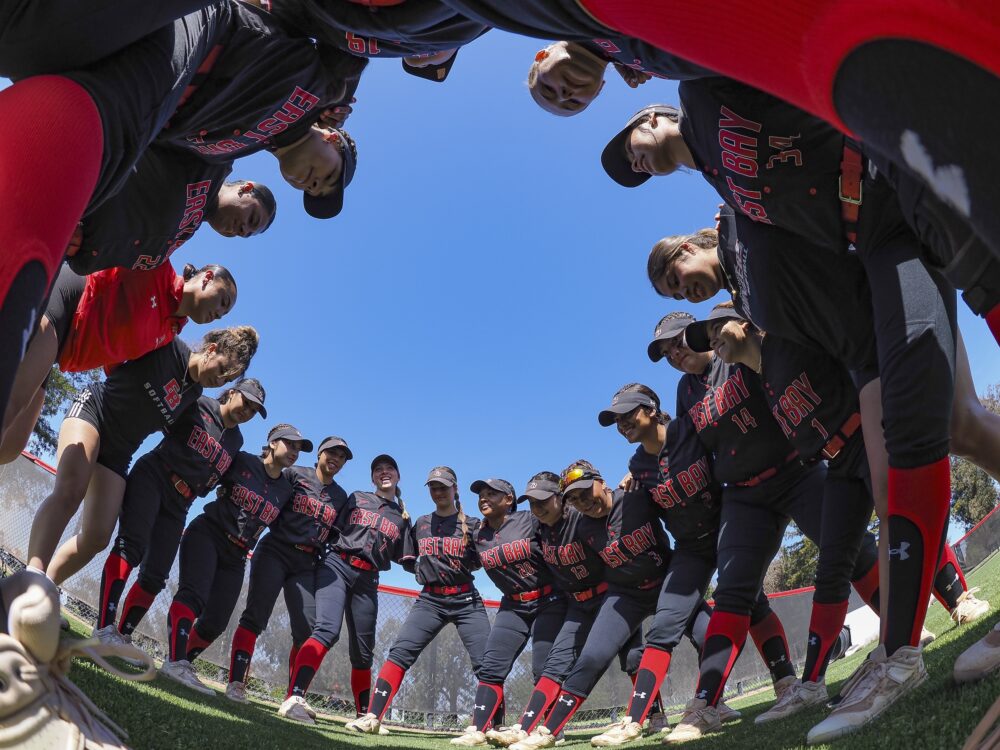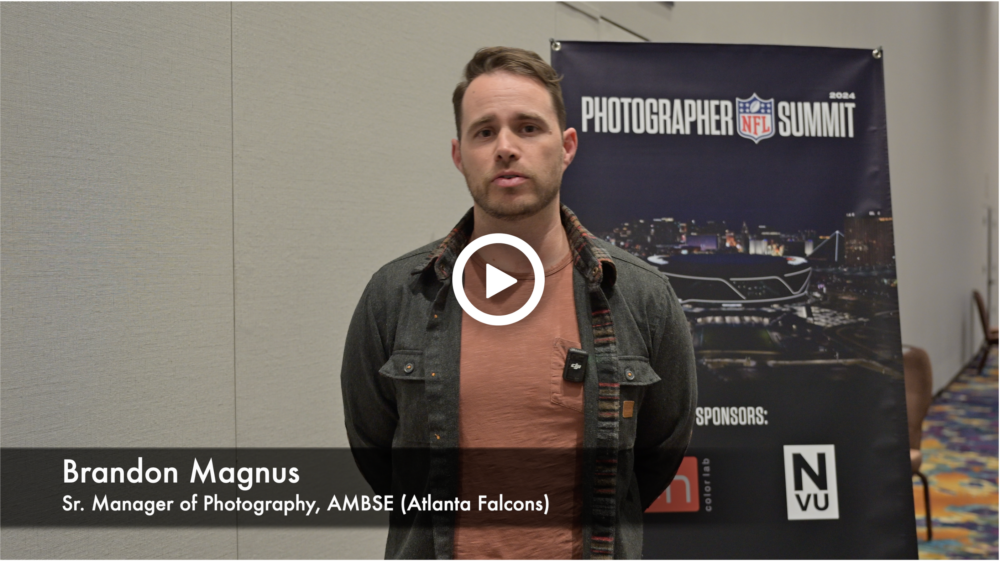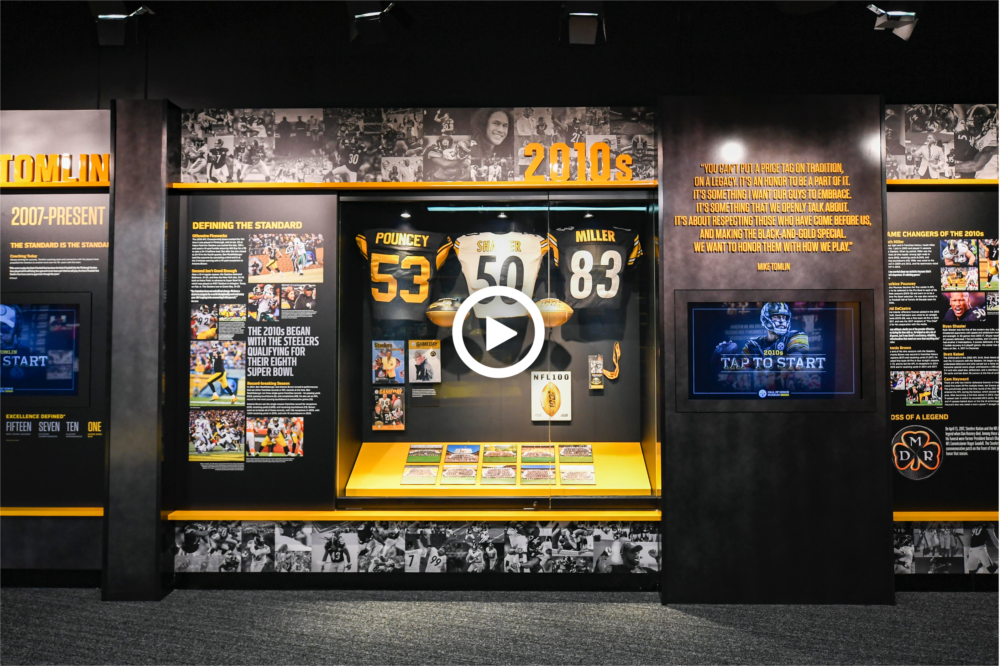Share
A Detailed Look at the Chicago Blackhawks’ Visual Storytelling Workflow
Chicago Blackhawks organize their historical archive and deliver behind-the-scenes content with PhotoShelter.
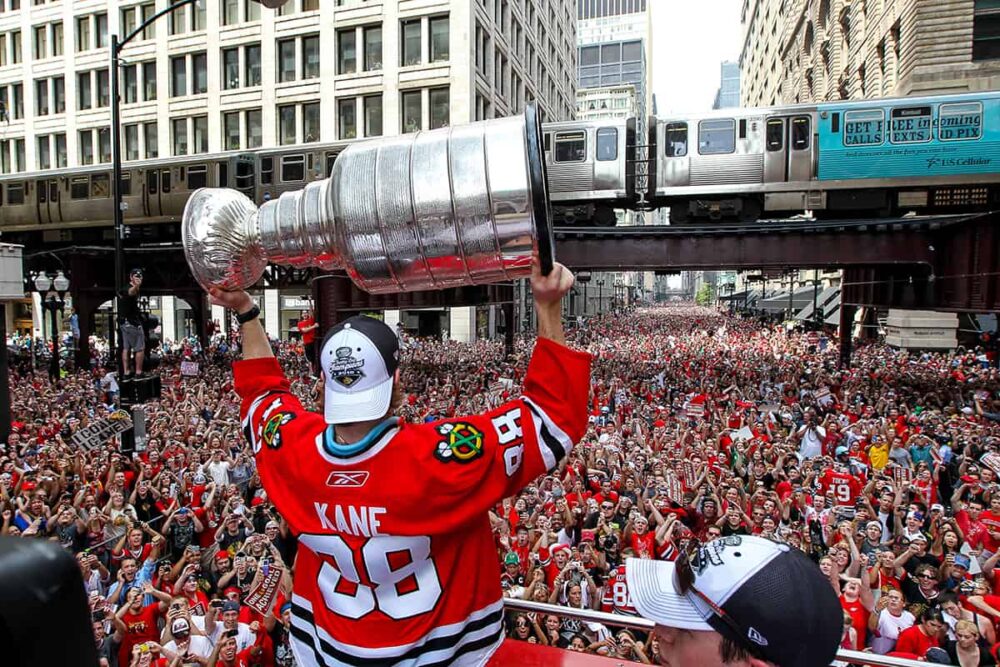
As the Manager of Photography for the Chicago Blackhawks, Chase Agnello-Dean is responsible for capturing and preserving this “Original Six” team’s big moments.One of his favorite photos from his 12 years with the team was taken at the 2010 Stanley Cup parade.
“The organization hadn’t won one in 49 years. No one knew what to expect, and it was this flood of emotion,” says Chase. “We’re going down Madison Street in Chicago and the police barriers had broken on both sides, and people were just stampeding towards this double decker bus, and Patrick Kane has the cup above his head, and the L train passes over the top, and it was this beautiful Chicago moment and you went, ‘yep, that’s what the Stanley Cup means to Chicago.’”
So how does Chase capture moments like this and turn them around for Blackhawks fans, both in the moment and in the future?
Let’s dig into the nitty gritty of his team’s workflow, ranging from how Chase overcomes challenging shooting positions to how the Blackhawks tap into a historical photo archive dating back to 1926.
Watch the video to get a behind the scenes look at the Blackhawks visual storytelling strategy, then read on to get the details.
Jump ahead to read more about:
Plus, watch our on-demand webinar, Winning Fan Engagement with the Chicago Blackhawks, to talk visual storytelling and workflow tips with Chase and Vegas Golden Knights Official Team Photographer Jeff Bottari.
Shooting Strategy
Chase and his team want to give fans a window into places they can’t go by buying a ticket or following breaking news updates in the media. The Blackhawks’ channels are packed with behind the scenes photography that helps fans get to know the players and the team on a more personal level. Let’s break down the different factors that allow this team to give fans an insider’s perspective.
Gear
Chase and his team shoot with Canon bodies and Canon lenses.
Their kit includes a mix of bodies, including:
- Canon 1D X Mark I
- Canon 1D X Mark II
- Canon 5D
When I asked him what’s in his camera bag that he couldn’t live without, he said his wide-angle 16-35mm Canon lens is always on a camera.
“I think the part of photography that most people are nervous about or have forgotten about is you need to get close to your subjects,” says Chase. “The 16-35, although it will distort a little bit on the edges, forces me to get closer to the subjects than I think a lot of our subjects are comfortable with, and at the end of the day it produces those intimate images that our fans are really interested in. It lets us go into spaces and invites them in.”
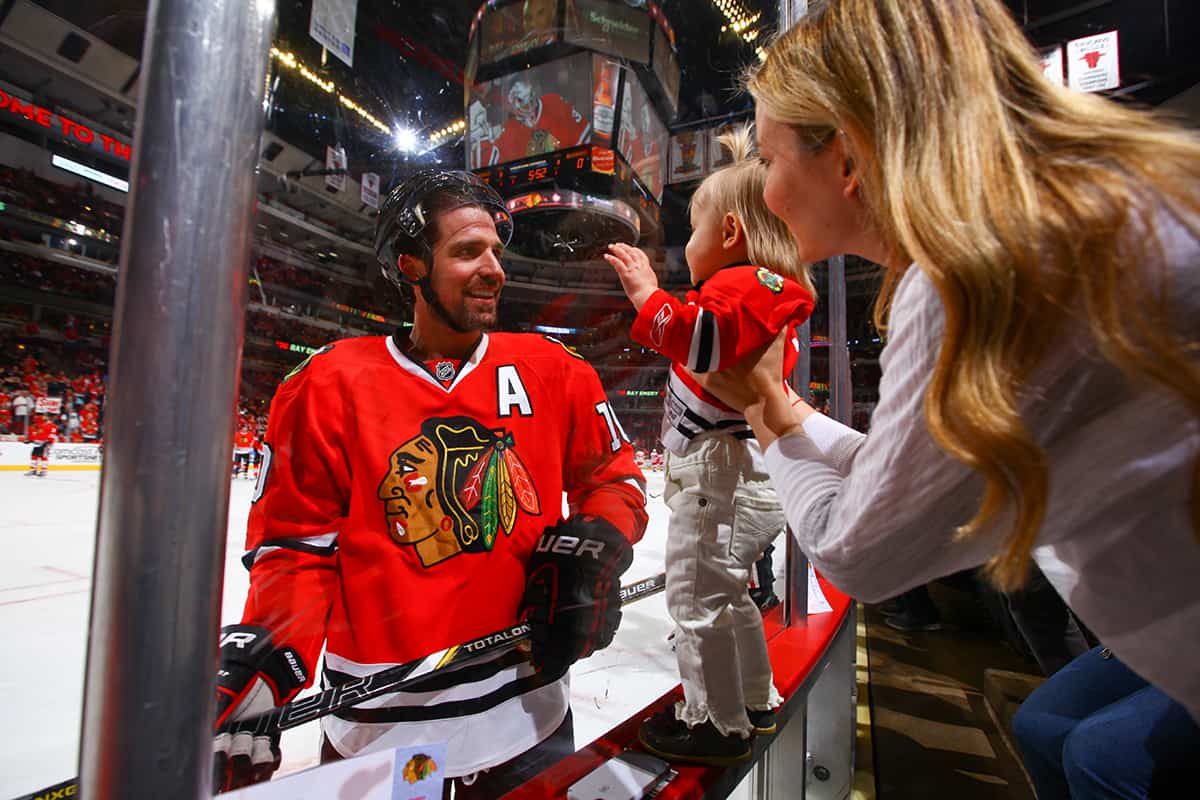
Trust
Chase comes from the journalism world, where building relationships is key. He brought that mentality to the Blackhawks, and his close relationships with the players and the coaches allow him to get exclusive behind the scenes access.
His best tip for getting that access is to be around consistently, and present the same face every day.
“Everyone is so used to seeing us every day that we just become part of the family,” says Chase. “We’re around, just like the trainers and the equipment staff and our coaches. We go to the same things, we’re on the same buses, so when they see us, they wave and go, ‘oh great, photo’s here.’”
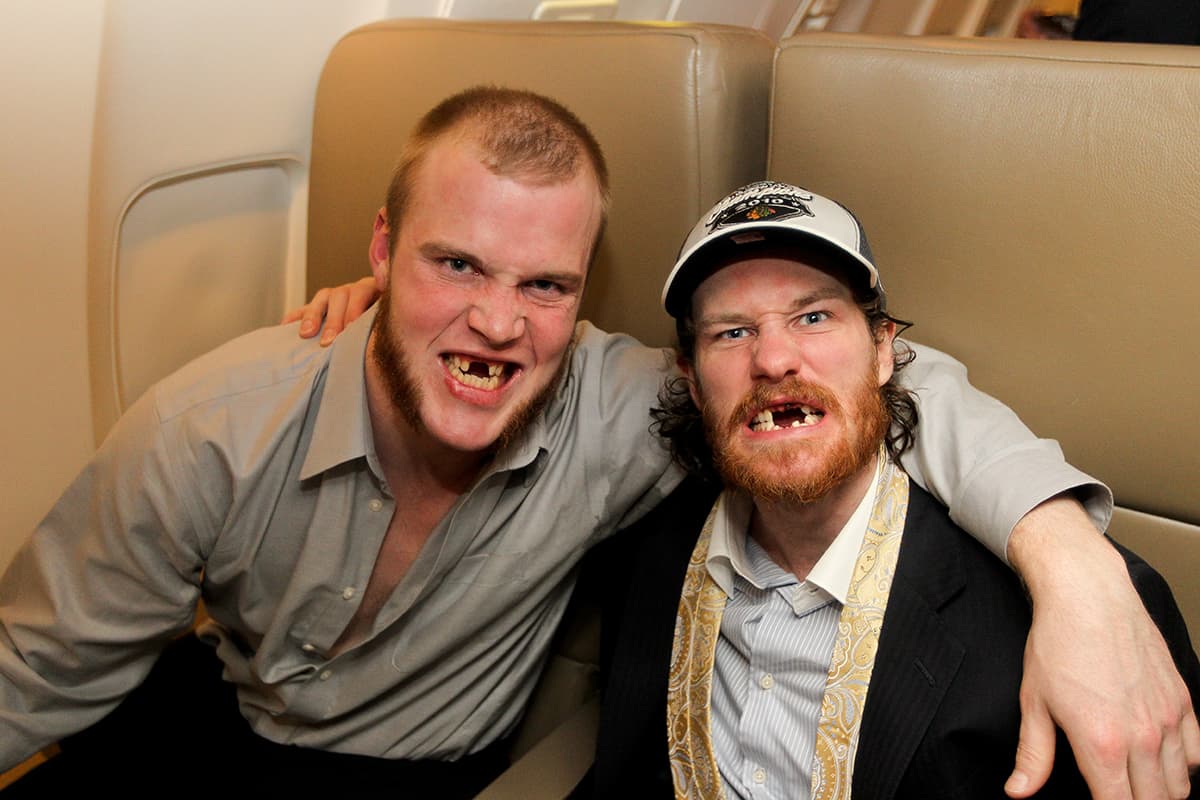
He says this consistency allows them to build trust with the players and capture the raw emotion of the sport.
“They’re used to it, so we get to see players being themselves,” says Chase. “And, they’re comfortable with us capturing that. They trust us that we’re not going to put them in a situation or use a photo that is unflattering.”
That trust has a powerful ripple effect. Chase and his team are able to capture genuine emotional moments that can help the fans really get to know the players. Plus, these images set the Blackhawks’ social media platforms apart from the news media, making their channels the go-to place for unique Blackhawks content.
Chase says the biggest obstacle is building the same level of trust with new players. But luckily, he has a core group of players and coaches he can rely on.
“I have some street cred built up with some of those players, and they’re willing to vouch for me as we kind of go and tell our stories,” says Chase.
Getting the Shot
Hockey is not an easy sport to shoot. It’s dark, the players are wearing helmets and pads, and all the action happens on the other side of a thick wall of glass.
Chase has defined shooting positions in the arena, and shoots through a 3.5×4.5″ hole in the glass.
“You have to know the game,” says Chase. “You have to be aware of the game and make sure you don’t get crushed by a puck.”
Even behind the scenes, Chase doesn’t have a lot of space to move around.
“Hockey locker rooms, our spaces, we carry significantly less players, and the spaces tend to be a lot tighter,” says Chase. “The space that I have to work in is limited at best, and over the years, we’ve gotten better at figuring out where I can be where I’m not in 9 people’s way.”
Knowing the game and being able to anticipate how the players are going to move helps Chase get the shot, despite the challenges in his way.
Photo Workflow
Chase and his team cover 41 home games and 20 road games a year. They also cover events and create images for retail.
For home games in the United Center, four photographers work together to cover the game from every angle, producing around 5,000 images a game.
Altogether, the team produces a little under 3 million images a year.
So how does the team streamline their photo workflow and make sure those millions of images get from point A to point B efficiently? Let’s break it down.
Game Day Workflow
For games in the United Center, Chase and the other photographers are hardwired to computers in their photo spots. The images can go from the camera straight to the team’s photo editor in ten seconds.
The photo editor crops, edits, tones and makes light adjustments to the images.
Next, she hands them off to the Blackhawks digital and social media teams, then sends them to the NHL. The editor has to sift through a massive amount of game imagery in real time. Luckily, she sits right next to the team’s social media manager in the press box, so they can easily work together to decide what images should go out when.
“In the digital era, you went to the website or the blog and things were kind of rolled out as they got them in a traditional news cycle,” explains Chase. “With Instagram and Twitter and whatever else we’re using these days, it has become an instant thing. So when we shoot things, we always have to be aware that one or two of those images is going to have to move quickly from us to our social media folks.”
After the game, the team loads the full shoot into Photo Mechanic, where they select the best images, caption and keyword.
Next, they upload the images to PhotoShelter, and share gallery links with the appropriate departments. The people who need images quickly know they can go into the media library and find what they need on their own, without waiting for Chase to update them.
“Our digital content folks always have access to what comes in and I’ve trained them well,” says Chase. “They know they can go and look for it as I’m pushing it out to everyone else.”
That fast access has a powerful ripple effect for the social media and digital content teams, and the fans they are trying to engage.
“I think the easier our digital and social folks can get at the content, the quicker and faster it gets out,” says Chase. “It helps them stay relevant. It helps them connect with the fans that are watching it unfold on someone else’s Twitter or on SportsCenter. We’re the team, we should be at the forefront of that, not chasing the news cycle. So when the images are available or our content’s available, we then become the voice that shapes that conversation.”
Let’s take a closer look at how the Blackhawks organize and grant access to their content.
Organizing and Sharing
The Blackhawks have about 600,000 images in their media library.
Chase wants image access to be self-service for most of his team members, so they can always find what they need, without having to ask. This saves time for both Chase and his stakeholders, who work in a range of departments like community relations, PR, marketing, human resources, ticketing and more.
Chase has granted about 60 people view and download access to specific galleries in the media library, based on what type of content they need.
Most people only have access to a specific set of images. And for one-off requests, they grant access with a link and password. This helps Chase make sure people are only using content that’s approved for them to use.
“The fewer number of hands you have in an archive, the better off you’ll be,” says Chase.
Only a select group of four people in the photo and digital content departments have access to everything in the media library.
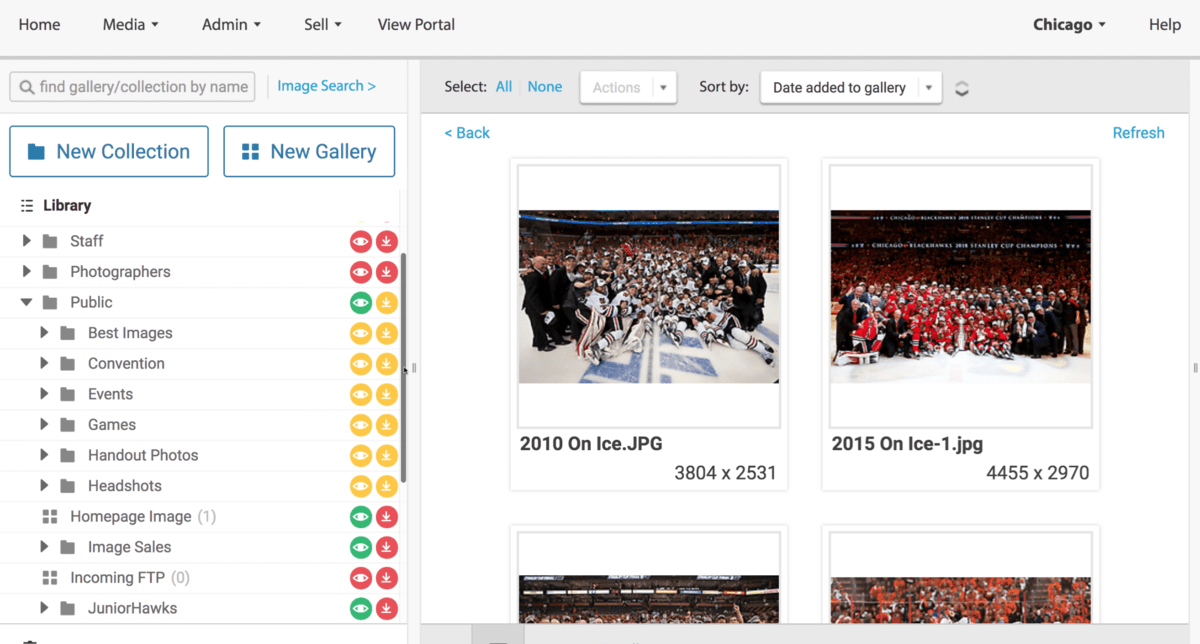
The team organizes their images based on who will need access to them. Their higher level collections include, “Games,” “Events,” “Headshots,” “Retail,” etc.
When you drill down into a collection like “Events,” the content is organized by calendar year. This makes it easy for stakeholders to browse collections and galleries to find what they need.
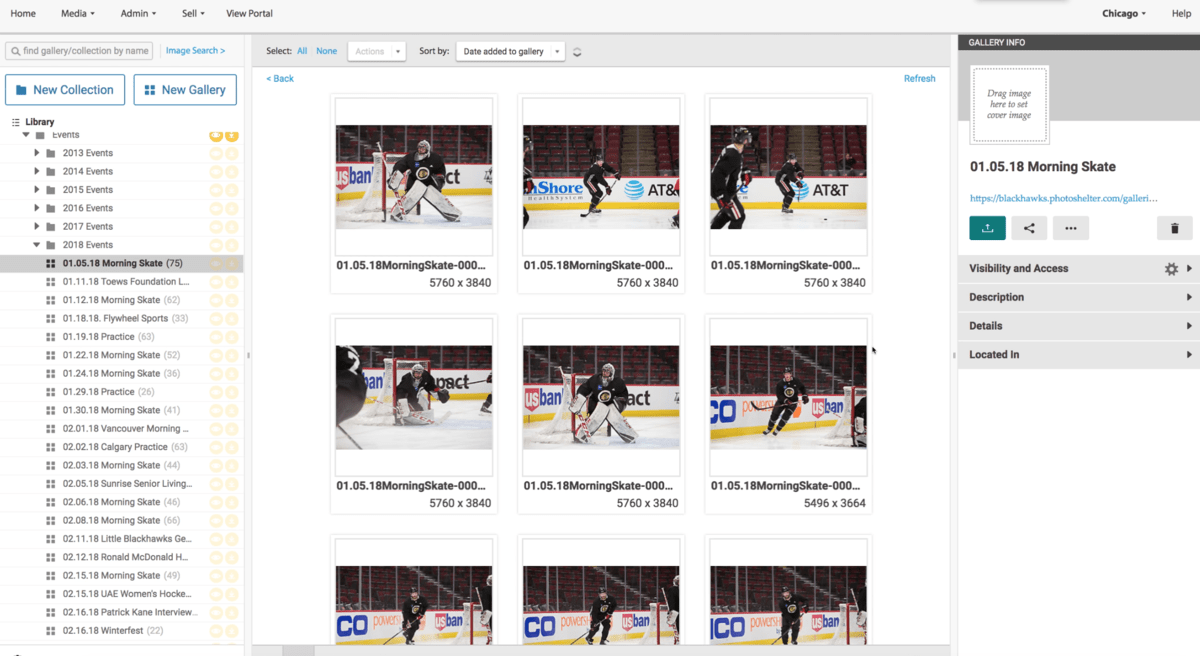
But, the Blackhawks don’t rely on library structure alone to organize their assets. Let’s dig into one of our favorite topics: metadata.
Metadata
For the Blackhawks, metadata is the key to making sure they can actually find and use their most valuable assets.
“We produce probably a little under 3 million images a year. Without applying the proper metadata, it would just be a pile of junk,” says Chase. “No one would be able to find anything, and I’d spend a good portion of my life digging through folders, hoping to find that one image that I know exists.”
The Blackhawks’ images used by internal stakeholders as well as external stakeholders at the NHL, so it’s important that they are tagged with a standardized set of IPTC metadata.
“We stick to kind of AP metadata style, where everything’s captioned, keyworded, city, state, location – and the keywords are broken down to what color jersey they’re wearing and the action that they’re actually involved in from a game standpoint,” says Chase.
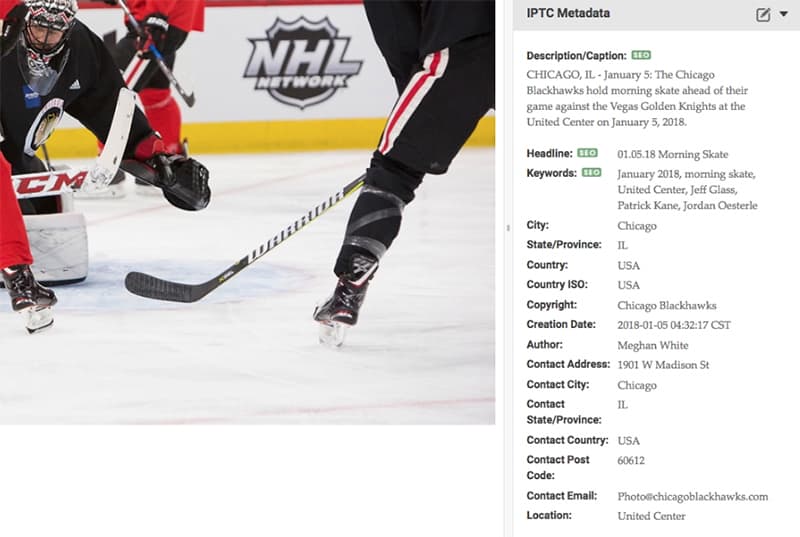
For events, the captions may be a little simpler, with a handful of generic keywords. But for games, Chase and his team are careful to tag images with captions and keywords that will preserve all of the details behind these photos for years to come.
“Instead of just, ‘the Chicago Blackhawks played the St. Louis Blues’ – I have eyes, I can see that – we want to know the why, the where, the what happened, what the final score was, if there were any milestones,” says Chase. “All of that is searchable and when you see those photos, you’d know what’s going on, and you know it makes sense, and you know why it was valuable to us – and why it’s hopefully still valuable.”
At this point you’re probably thinking, how do the Blackhawks have time to tag thousands of images? Great question.
First, they tag everything in batch. They select the whole shoot and apply a standard set of keywords depending on which department will be searching for the photos, the month and year they were shot, etc.
Then, they go through and add more specific keywords to individual photos. Not every photo needs extra keywords. Chase and his team find the photos that capture important milestones and add keywords and captions that will preserve that context for years to come.
“There are unique pieces of history that happen, and they happen frequently in hockey,” says Chase. “We want to make sure that stuff’s available.”
Adding this detailed metadata can be very time consuming. Luckily, Chase has an intern who is very meticulous, and the return is well worth the investment. Everyone who needs the images, from Chase and the photo team to members of the social media and digital content teams, can easily find and use the images to engage fans.
“You can always go back, and you can always find what you need within two clicks, and it’s all there,” says Chase.
Preserving History
While Chase and his team are responsible for powering a fast photo workflow that keeps up with the fast pace of social media, their strategy also empowers them to preserve Blackhawks history. Making sure the team’s big moments are findable allows them to get the most possible value out of every image.

“We want to make it so in 40 years when I’m long gone, they can go find the photo of Patrick Kane scoring the game-winning goal in 2010 as he comes back down the ice throwing his gloves in the air,” says Chase. “That’s a sequence in time that will always be important for the Chicago Blackhawks.”
Digitizing the Print Archive
Chase knows how important it is to make these images available, because when he came to the Blackhawks he inherited a print archive of about 100,000 prints, negatives and slides dating back to 1926.
“The first 80 years, 75 years of Blackhawks history had been put in a file cabinet,” says Chase.
Over the last few years, he and his team have been scanning and digitizing the images, uncovering players and milestones that had slipped through the cracks. They have uploaded the images to PhotoShelter and added relevant metadata so they are easy for the team to find and use.
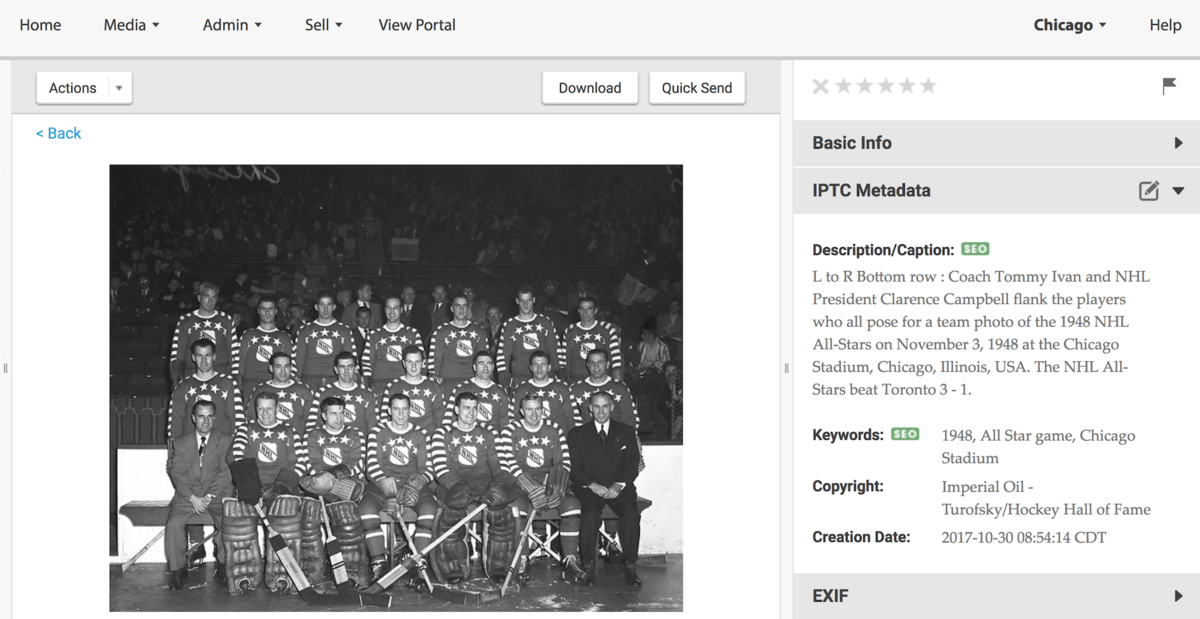
Now, the team is giving new life to forgotten moments in Blackhawks history. The team’s historian is writing stories about former players, and the social media team is sharing throwback images that fans love.
Check out how the image above became an Instagram post with more than 17,000 likes.
“There were a lot players that came and went through here, and a lot of interesting stories, and a lot of interesting bits of information,” says Chase. “These photographs are part of that, and we need to find a way to bring them to light and make them available for the generations after we’re gone.”
Go Behind the Scenes with the Chicago Blackhawks and the Vegas Golden Knights
Want to learn more about the Blackhawks’ visual storytelling strategy? Watch our on-demand webinar with Chase and Vegas Golden Knights Official Team Photographer Jeff Bottari to get all your questions answered. And, be sure to ask any lingering questions in the comments below!
Cover photo by Chase Agnello-Dean, Chicago Blackhawks

